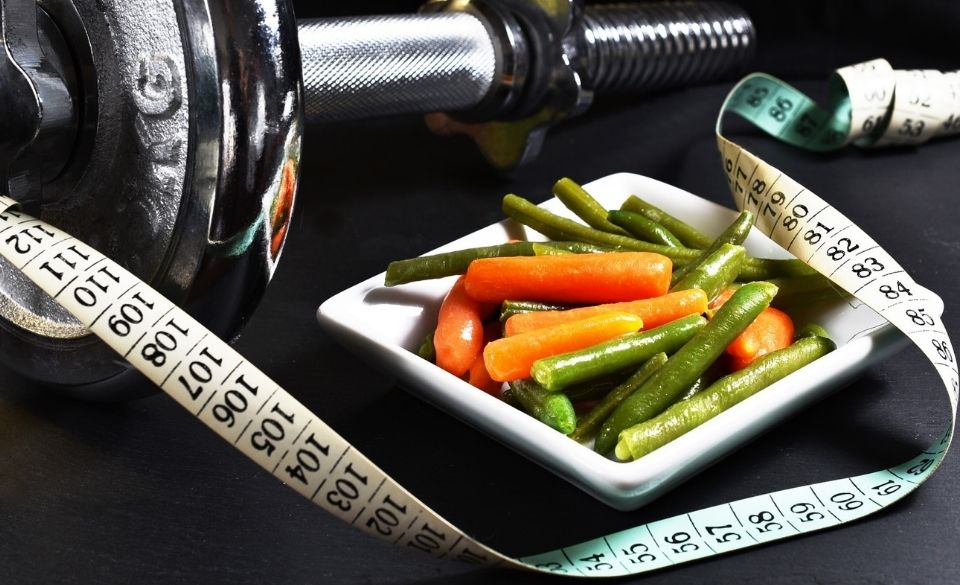
How to Increase Your TDEE? UPDATED 2022 – A Complete Guide
Page Contents
When you’re trying to burn fat and decrease your body fat percentage, there are several ways to go about it. The advice you might find online differs, but there’s always one key point that is crucial to losing weight in 2022; you must use more energy than you take in per day.
When talking about the energy you use in a day, it’s often called the Total Daily Energy Expenditure (TDEE for short). What exactly does TDEE mean though? And how to decrease your TDEE?
This complete, updated guide is here to help, including answers to your questions about TDEE and advice for how to increase it.
How to Increase Your TDEE?
Okay, so TDEE stands for Total Daily Energy Expenditure. What this means is how much energy you exert by doing your daily routine, without specifically trying to exert more or less energy.
TDEE is different for everyone – if you work a job where you sit at a desk for most of the day, your TDEE is likely to be much lower than someone who works a job where they move around a lot.
Other factors can contribute to your TDEE though, such as how often you exercise and how intensely. Your body fat % also is a factor. If you work a sedentary job but exercise every day, it’s possible to have a similar TDEE to someone who works a manual job but then will veg out after work every day.
To increase your TDEE, you simply need to use more energy than you consume in a day. There are two main ways to do this – eat less and take in fewer calories or do more exercise and physical activity.
Having a higher weight will mean that your TDEE is also higher – this includes muscle mass, so by working out and building muscle your TDEE will also increase. Bigger mass means that your body needs more energy to keep things running smoothly.
How to Calculate Total Energy Expenditure?
To figure out how to calculate total energy expenditure, you’ll need to know a few things about your body. These are your gender, age, weight, height, daily activity level, and body fat percentage. From here, calculating your TDEE yourself can be confusing.
Luckily, there’s a handy TDEE calculator tool that you can use online, for free. The calculator will ask for the above information, and then use this to give you your TDEE and other helpful advice that can increase your energy expenditure.
Energy Expenditure for Different Physical Activities
Some exercise is better than no exercise when it comes to increasing your TDEE, and this is especially true if your daily activities are low-energy. But exactly what kind of exercises should you be doing?
It’s common sense that you’ll get different energy expenditure from different physical activities – some popular exercises might take a lot of effort, and you might feel like you got a good workout after them…but you might be surprised to know that they only use a minimal amount of energy.
Energy expenditure for exercises can be expressed in kcal that you burn through doing the exercise, but there is also a separate measurement for energy expenditure. This is a MET, which stands for Metabolic Equivalent of Task.
Every action you do has an assigned MET value. Just by reading this article, you’re using about 1.5 met. That’s not much compared to something like running at 5.35 mph, which has a value of 11 METs.
METs are calculated based on how much energy they take compared to sitting still. When you’re sitting and not doing anything, that’s classified as 1 MET of energy. Running at 5.35 mph takes about 11x as much of your body’s energy as you’re using by doing nothing, so that’s 11 METs.
If you prefer to measure exercise energy expenditure in kilocalories burned, then you can use the MET score of an exercise to work out how many calories you’ve burned by doing it. The formula for this is: (MET x 3.5) x (body weight in kg) / 200.

Best Exercises to Increase TDEE – UPDATED 2022
When thinking about the best exercises to increase TDEE, it’s important to understand the purpose of increasing your TDEE in the first place, and the effect this will have on your body.
By increasing your TDEE to above what you consume in a day, you’ll enter what’s called a calorie deficit. This is where your body has a shortfall in energy you use and what you’ve eaten that day. When your body enters a calorie deficit, it makes up for this energy gap by using its stored fats and fluids.
Your body is smarter than you probably give it credit for, as it’s always preparing for a worst-case ‘starvation scenario’. A little bit of what you eat is stored away for when you need it.
To enter a calorie deficit on purpose, you need to take in fewer calories than you use. You can calculate this number in a similar way to calculating your TDEE, and an online calorie calculator is the easiest way to do it.
A calorie deficit doesn’t mean that you’re starving though! The decrease in energy is minimal, so your body will just take a tiny bit of its emergency food storage to make up the gap
With that in mind, it makes sense that the best exercises to increase your TDEE are workouts focused on burning fat and burning energy. These include strength training, weight training, running, and other cardiovascular exercises.

How to Increase your TDEE – Closing Thoughts
Hopefully, you now know how to increase your TDEE. Increasing your TDEE can be easy by doing two simple things: increasing your daily exercise or decreasing your food intake. Increasing your TDEE will help you to lose weight faster by making higher levels of activity a habit, and also help you to build more muscle from exercising.
If you’re looking for exercises and routines to help you lose weight and build muscle, check out our specially made WOD recommendations, exercise guides, and more to help you get your perfect figure in 2022.


